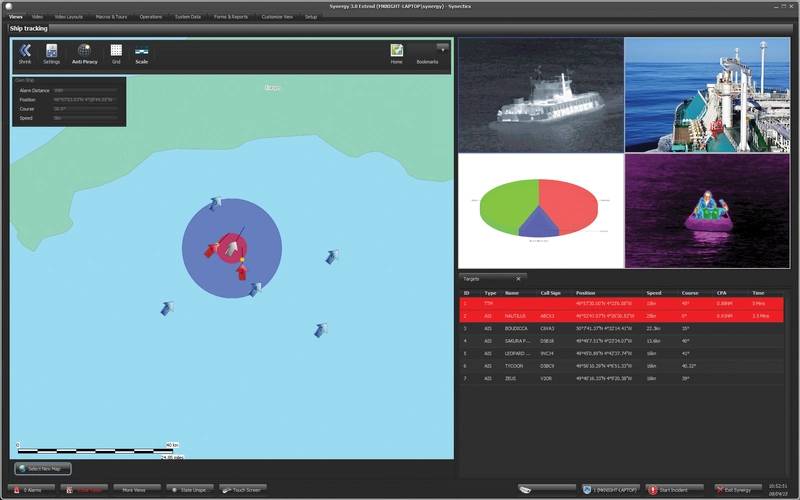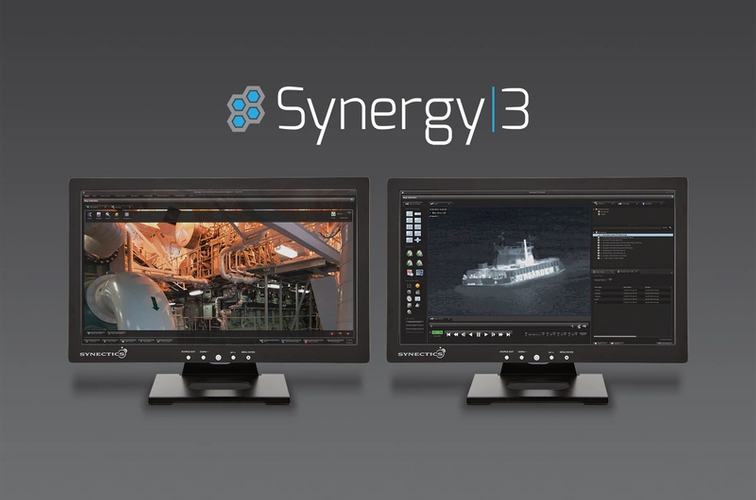Offshore Threat Detection Prevents Operational Downtime
Offshore threat detection cannot simply be about security; it also has to focus on identifying and mitigating the risk of operational downtime.
This market-led reality is reflected in Synectics’ focus at this year’s Offshore Europe exhibition in Aberdeen, September 5-8.
An expert in delivering end-to-end surveillance systems for the world’s most demanding environments, Synectics has been at the forefront of oil and gas safety and security for decades. During the event, Synectics will showcase advances in both radar integration technology – to aid threat detection and response – and radiometric camera capabilities for predictive maintenance and rapid fault detection.
Darren Alder, Divisional Director - Oil & Gas said: “Identifying long-range threats such as approaching vessels is challenging for offshore assets, whether fixed or floating. Harsh weather conditions, distance and movement all make for a difficult identification and tracking outcome.
“The issue lies in the fact that, while navigational pulse radars have a powerful detection range that exceeds most camera limits, they have poor accuracy in terms of spatial resolution. Unifying functionality through integration solves this issue. The radar integration solution we’ve developed within our command and control platform Synergy 3, enables the system to ‘listen and react’ to NMEA protocol sentences including radar, Automatic Identification Systems (AIS), compass, and GPS.
“This means, for example, that on notification of distant targets detected by radar, Synergy 3 can automatically cue cameras (optical or cooled thermal cameras depending on distance requirements) to observe, track via absolute positioning, and visually classify the approaching target to determine the potential threat level.”
Early detection is also the driving force behind Synectics’ enhanced radiometric thermal camera capabilities.
Radiometric-enabled COEX™ thermal camera stations ‒ used in conjunction with Synergy 3 ‒ negate the need for a separate analytics program. This capability allows operators to set areas of interest within camera’s specific field of view (for example a row of compressors or motors), assign temperature thresholds to those areas, and then ‘see’ heat variations that may be indicative of wear and tear, or imminent failure.
Darren explained: “Radiometric functionality refers to the cameras ability to measure temperature differences by interpreting the intensity of infrared signals being received. This in itself is not a new development and has been a mechanism used for determining surface temperature characteristics for some time.”
Preventing downtime with predictive maintenance
“What is new”, he continued “is pairing this with an onboard analytics program, developed in-house by our R&D team in response to customers’ requirements. This functionality, when integrated with Synergy 3, presents a value-added opportunity for cameras to fulfill a proactive security function and play a vital role in predictive maintenance programs by pre-empting failures and process issues.
“This capability also makes our COEX thermal camera stations ideally suited to detecting flare or igniter flame anomalies. In this application, the flare stack flame and/or igniter flame is determined as the area of interest and associated with preset temperature parameters. An automated alert is then generated, via Synergy 3, should variations be detected that may indicate issues with burn, gas composition or flow.”
Synectics’ range of solutions on show
In addition to showcasing its radar integration, Synectics will also be holding live demonstrations of Synergy 3, featuring offshore-specific dynamic workflow examples, as well as products including its COEX C3000 HD IP PTZ (with integrated power base) and C2000 TriMode PTZ camera station incorporating radiometric functionality.
Darren concluded: “Offshore has always been, and continues to be, a significant market for us. In fact, despite recent turbulent times in the oil and gas market, we come to the show this year having secured a number of high-profile fixed and floating asset contracts. That’s why it’s so important to us to attend shows like Offshore Europe with new and evolving innovations that provide practical solutions to sector issues and challenges.”















